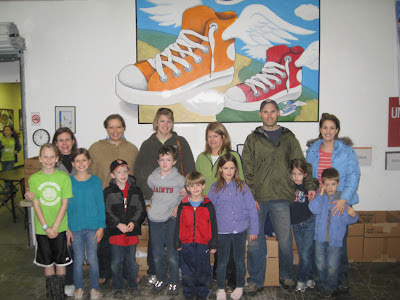Our February meeting featured the some of the finest talents at the T. Reid Salon: Tonya Reid (owner), Kim Schneider (esthetician), and Noel Lance (stylist). They shared with us tips and suggestions for looking your best.
Kim Schneider, an esthetician (skin care specialist), answered several questions about skin care. The foundation for skin care is in the daily routine which should include three steps: cleanse, light exfoliation, hydration, and sunscreen. Any care you give should include more than just your face; make sure you are treating your neck and chest area as well as these areas are also susceptible to sun damage and can show age too. Good skin care begins at any age, so it isn't too early to encourage teens and kids to start good skin habits too. Using good products can make a difference in how effective the daily routine is, and Kim is happy to advise as to what products are best for your skin.


For more intensive repair, Kim highlighted the benefits of a chemical peel, which helps to reveal radiant new layers of skin that are buried underneath layers of older skin. Chemical peels are best done in the fall and spring when weather is less intense, and despite the name, don't hurt (though they might tingle a little). You will usually notice a nice glow immediately after the peel and then have some flaking three days later (something to keep in mind if you are getting ready for a big event). Microderm abrasion is another option for intense exfoliation on the face. The microderm abrasion device blasts the skin with crystals and the sucks up the dead skin, revealing new layers of skin.
Kim addressed other problems areas such as dark circles under you eyes and weak lashes. "Total Eye" is a product that repairs and conceals dark circles; it is worn during the day as part of your day routine. "Intensive Eye Repair" also helps with dark circles and it is worn at night. As for weak lashes, there is a
prescription available for strengthening lashes, and T. Reid is considering carrying a similar mascara in their boutique. Kim also recommended lightly covering lashes with Vaseline at night to strengthen lashes. If you are preparing for a big event and need quick results, Tonya recommended an oxygen facial, where the face is plumped with oxygen to firm skin. In general, be careful not to overdo skin treatments, particularly treatments at home.
As for hair, Tonya and Noah gave several tips about hair care and styling. Tonya counseled that is always better to do it right first, particularly with color. It is far more expensive to do corrective color than the initial treatment, so choose wisely when you have someone color your hair. If it is time to go gray, she recommended doing it gracefully over a couple of years instead of right away. She works in lowlights and eventually brings out the sophisticated silver look.
Dry hair is common in the winter because you battle constant temperature changes, so using a moisturizing shampoo can help. Adding a smoothing agent like the Bamboo Smooth Kendi Oil (Dry Oil Mist) that she gave to Ellen Yingling can help with managing frizz. Proper hair drying technique can also help with frizz control. As Tonya said, a cat doesn't like it's fur brushed the wrong way and neither does your hair respond well when it is brushed up, so make sure to brush it down when you are drying. Power dry your hair to 80% dry and then use a ceramic round brush to finish the dry and style. If you have a concentrator tool for your dryer, use it as it will help to concentrate the hot air on the hair. As with skin, using good tools will improve your results. If your dryer is older than two years, it may not be heating your hair properly which can result in damage, so it is worth replacing. High quality flat irons, curing irons, and round brushes (look for a ceramic one with a sealed handle) can also produce pleasing results while protecting your hair from damage.

Tonya offered some tips for on-the-go styling, such as using an uplifting root blaster to freshen up a day-old style and give it volume. Pull back pieces in the front and pin in the back at the top of the crown for a more finished style (see Sarah Rowe's hair above). Looking for a fun option for your usual ponytail? For Michelle's look, Tonya added a cute braid across the front and then pulled the rest of the hair back into a trendy pigtail look. Noah also talked about styling a loose curl with a round brush. The brush size that you use will affect how tight the curl will be (the larger the brush, the looser the curl). Roll the hair onto the ceramic brush, heat it with the blow dryer, blast it with the cool shot (if you have that button), and then carefully twist the hair out of the dryer.
A darling green house on East Blvd, T. Reid Salon is a full service salon and spa as well as a boutique. Tonya, Noel, and Kim are available for appointments. Call 704-377-1511 or find them at
www.treidandcompany.com.










